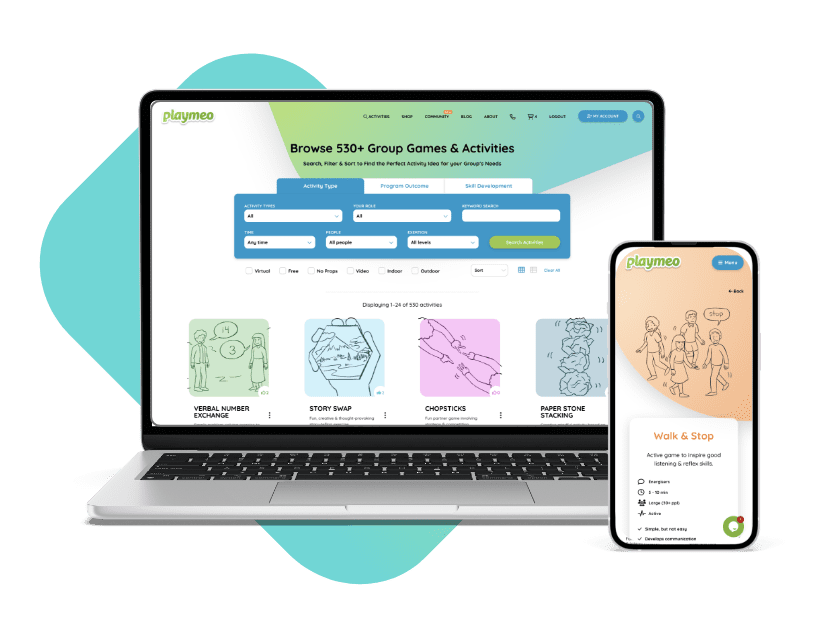Learn to Stop An Activity Before It Wanes
This week’s Facilitator Tips episode will help you learn when to stop an activity before it wanes or loses momentum. Wait too long, or stop too early, and your decision – or indecision – may negatively impact your group.
<< Go to Episode 29 Go to Episode 31 >>
At first glance, stopping or finishing an activity seems like a simple task.
But choosing the most appropriate moment can influence the impact your decision has on your group, not to mention how you choose to frame or prepare your group for their next experience.
Click the play button above to learn when to stop an activity before it wanes.
If you have something to add, please add a comment.
Want to join the conversation?
Please leave a comment at the bottom of the page (you must be logged in.)
Don’t have a playmeo account? Join today.
Useful Links & Resources
- Episode 5 – learn a bunch of fun and engaging ways to start your programs.
- Episode 9 – learning to stop an activity before it wanes is one thing, but knowing how to stop it can be quite another challenge. View this short video tutorial to learn more.
…EE
Video Transcript
Hi there and welcome to Episode 30 of the Facilitator Tips video series. My name is Mark Collard. I’m an experiential trainer and author, and today I want to focus on how do you know when to stop an activity before it wanes. What do you look for?
And this is something that is certainly gained through experience, and I certainly have gathered more strategies to help me make good decisions in that space. So I want to share some of those with you now.
First of all, it’s really important, it’s one of your primary responsibilities as a program leader, is to connect with the group. I don’t mean you have to be friends with them, but to connect with the feelings and sensations of the group. What are they feeling right now? Do you sense that they’re bored? Are they apathetic or they’re overexcited? The more you connect with that affect, the AFFECT, the affect of the group, the more likely you’re going to make a good decision about whether the activity is waxing or waning.
And I’ll always remember my friend and mentor Karl Rohnke telling me “Hey Mark, if you are waning more often than you’re waxing, it’s time to get another job.” So that’s critical. You’ve got to connect with the group.
Then look for subtleties, just the way that maybe people are holding themselves. Maybe a few people are starting to drop out, or maybe people are disengaging from conversations. Little subtleties and nuances in the way the group operates ordinarily can give you some clues about okay, don’t wait too long.
Don’t wait too long. Sometimes… Oh, I’ll just… They seem to be really enjoying. I’ll just leave it a little bit longer. The risk there is that they might actually die of boredom, that is they’re getting too much of a good thing. Better to have them say, can we do that again than have them say, can we move on now. I know which one I would rather be in. So yes, it’s okay to cut it early from their perspective, but that actually helps you channel their momentum.
It’s like a flow where you reach a particular peak and rather than dipping back down again, you sort of catch the crest of the wave and then build-up to the next one and the next one. Now at some point, you want to be able to bring the energy down, but if you’re building on that momentum that really helps you pick when the energy and perhaps the activity might be starting to wane. So it’s like wax, wax, wax, and then start to drift.
And that’s the end of this episode. I hope you find some value here, and if you’ve got some ideas about what helps you actually work really well as a facilitator, maybe you’ve got some tips to share with the community as well, please leave a comment either at our app or directly on our website through our blog.
And if you’d like to get the show notes, go to www.playmeo.com Episode 30.
Okay, that’s it for now. I look forward to seeing you in our next episode.
All the best. Bye-bye.







There are currently no comments